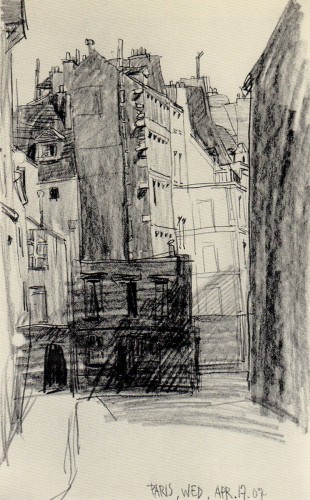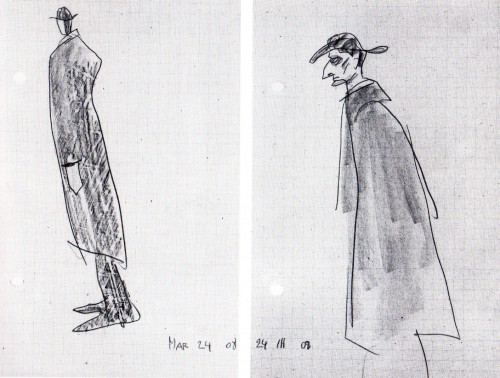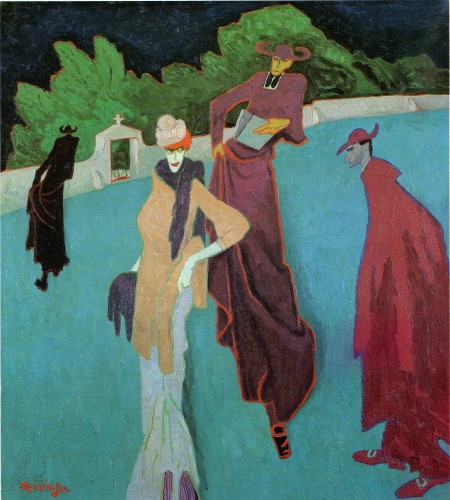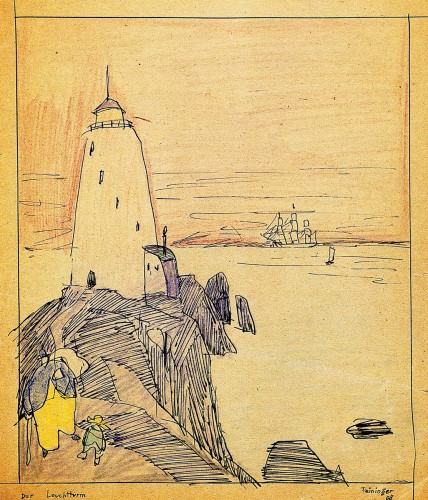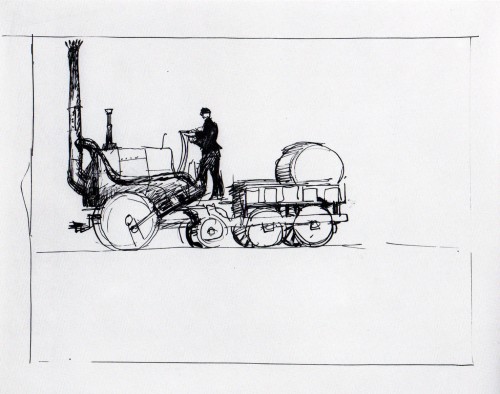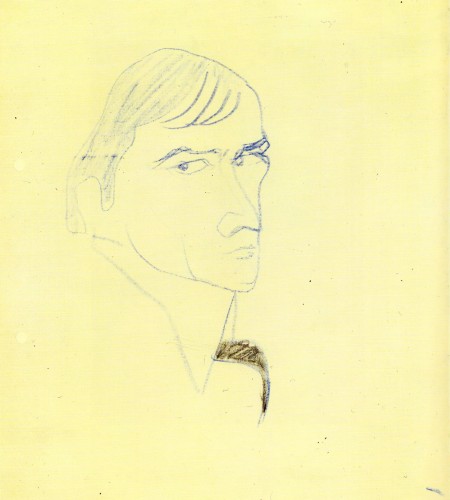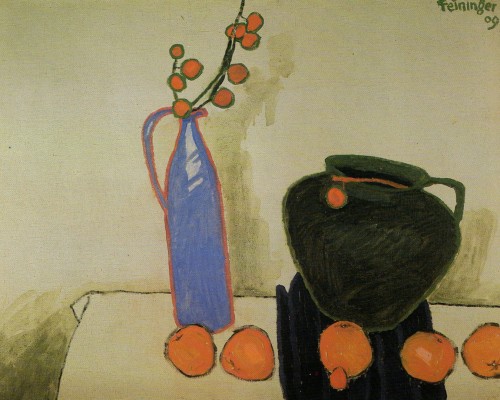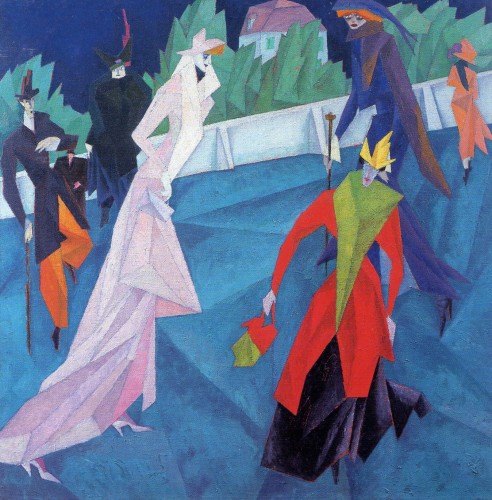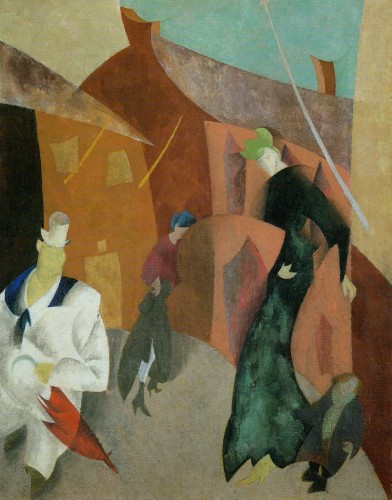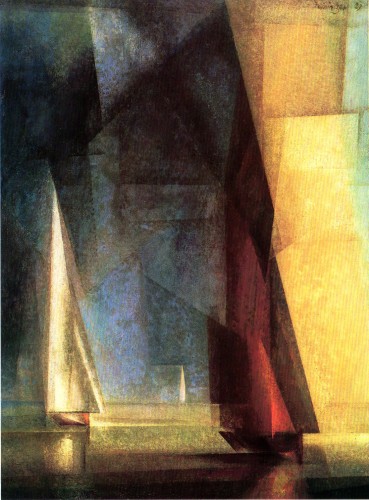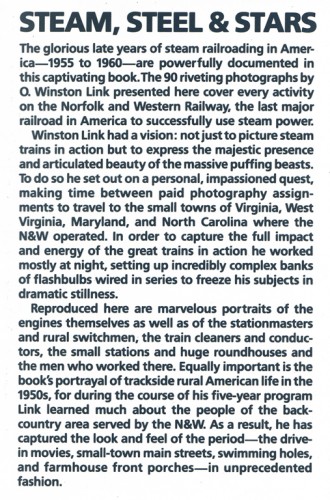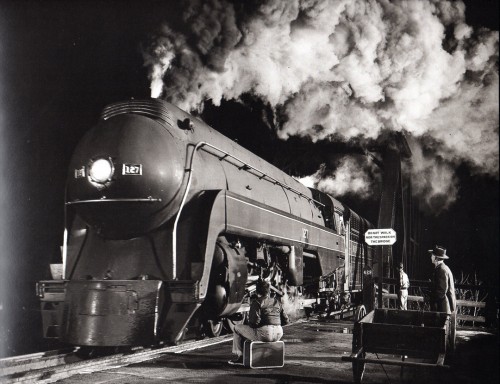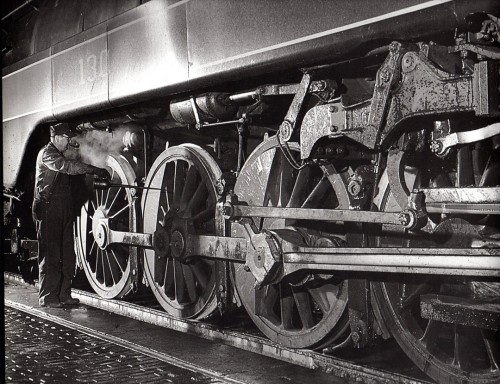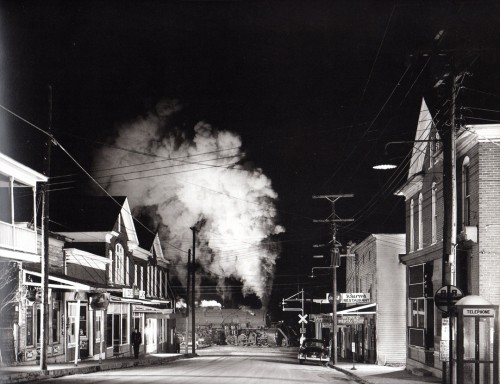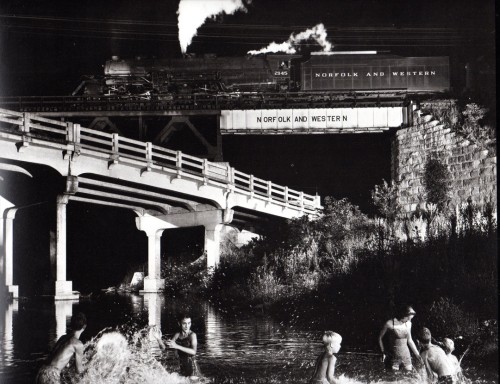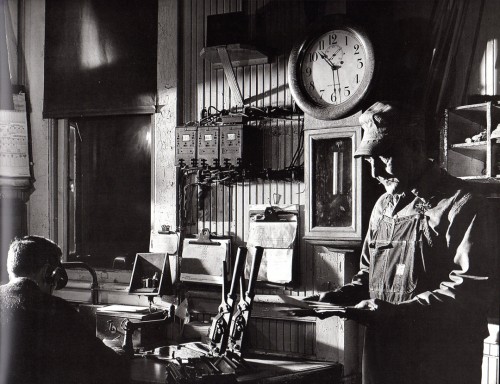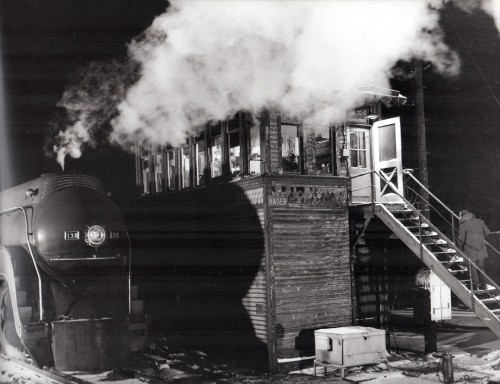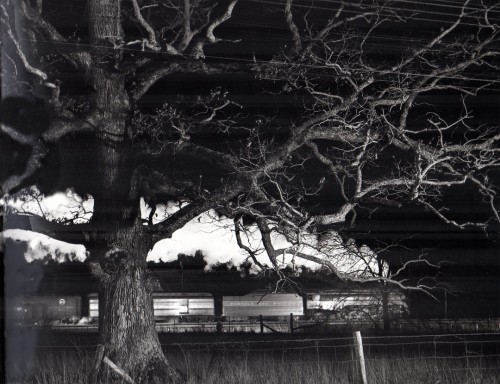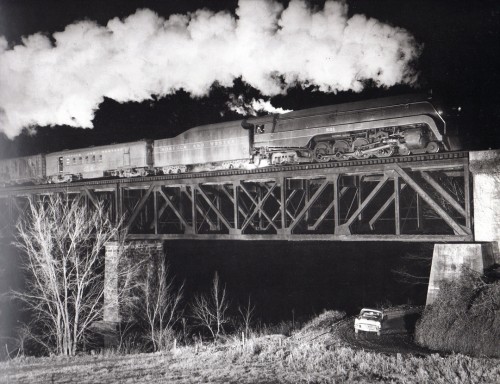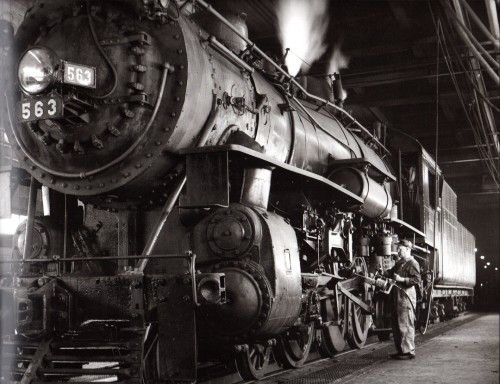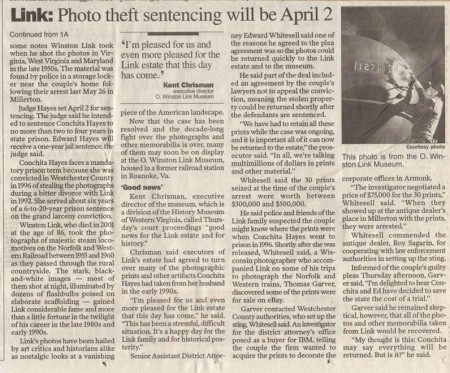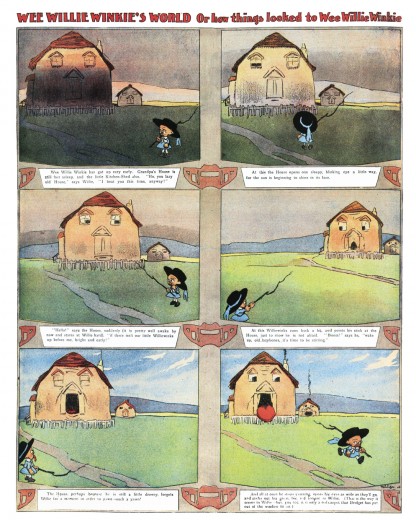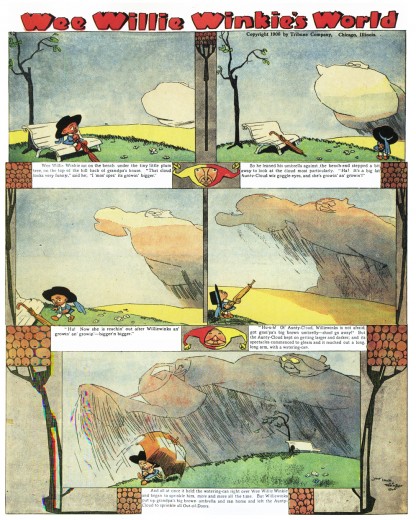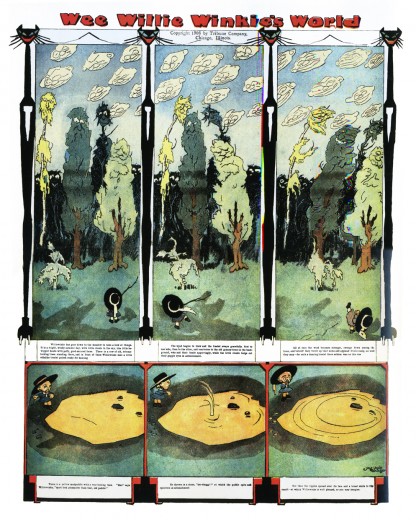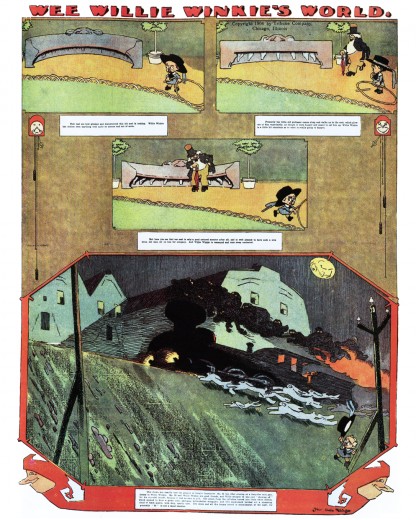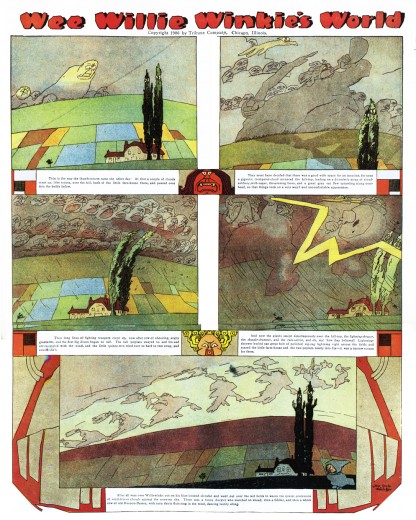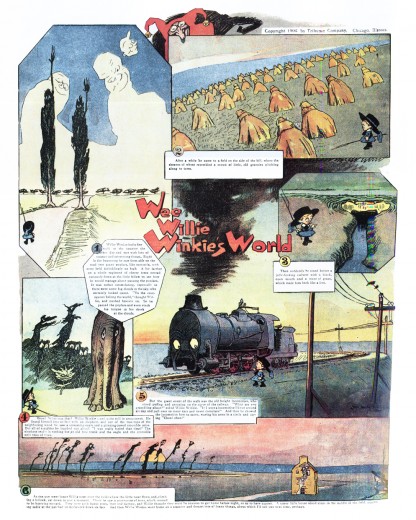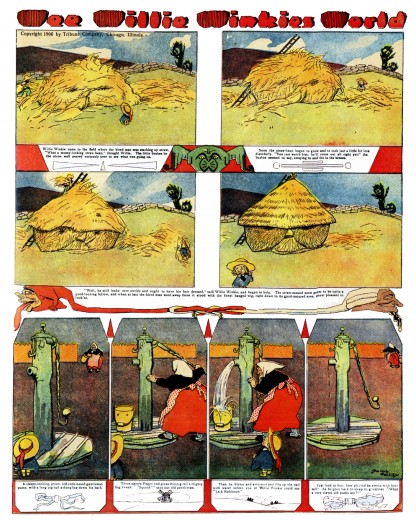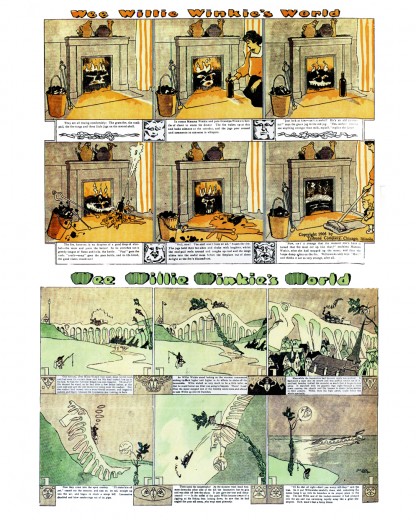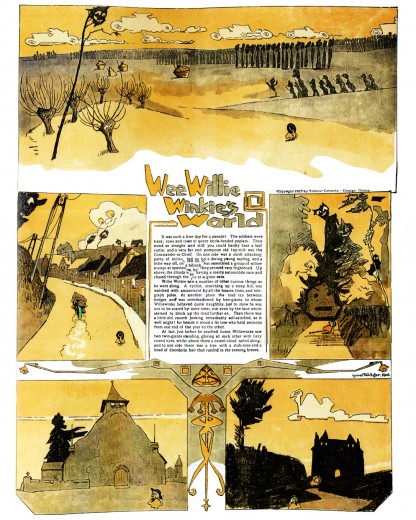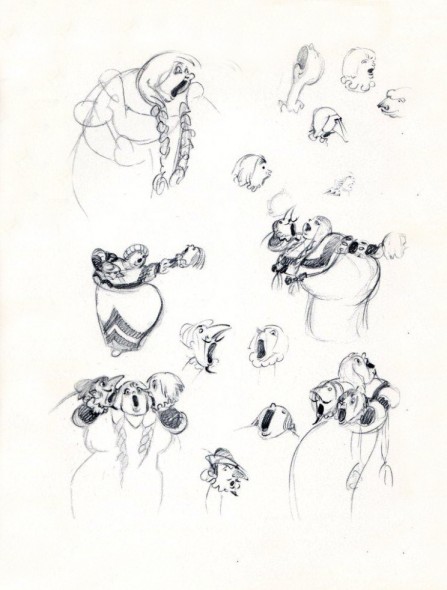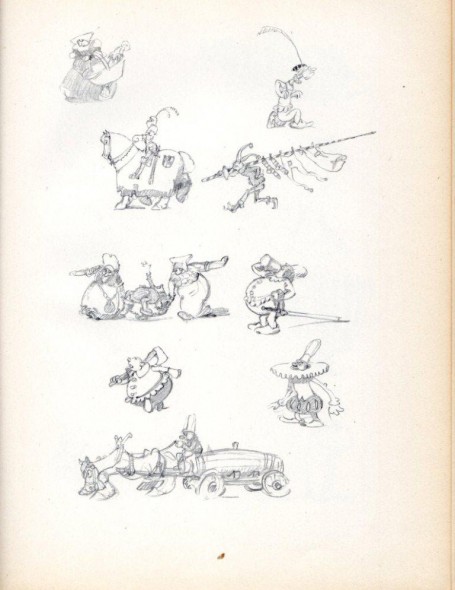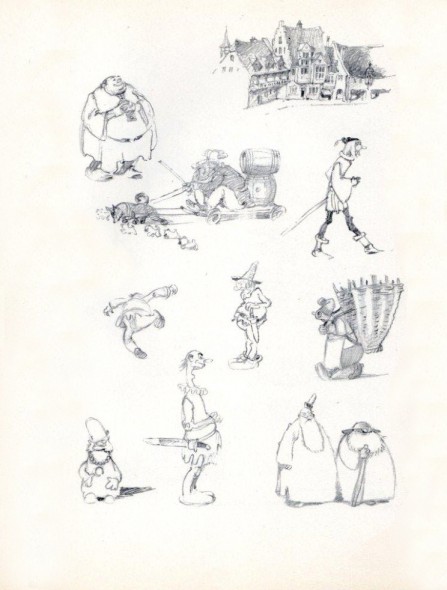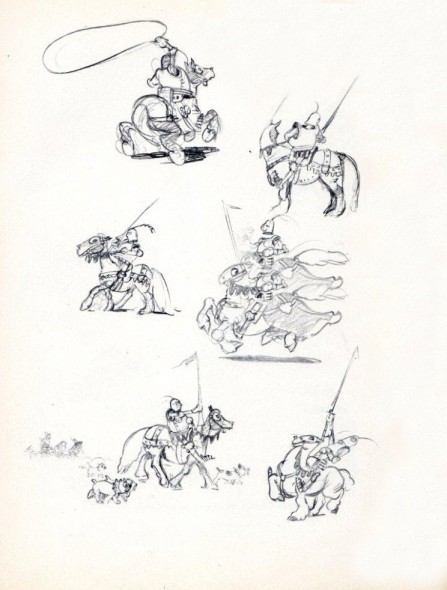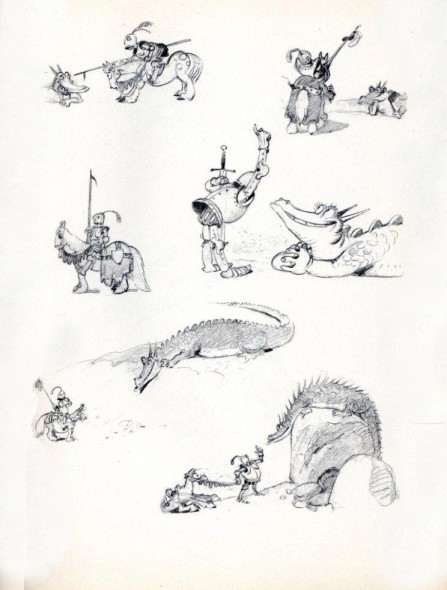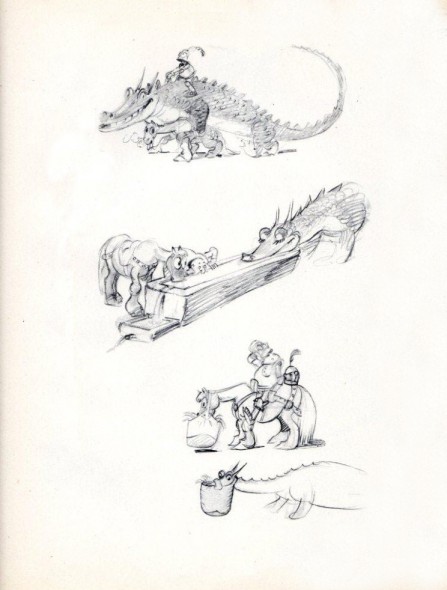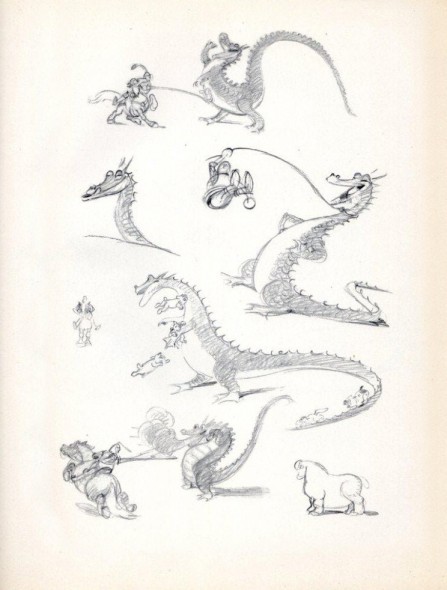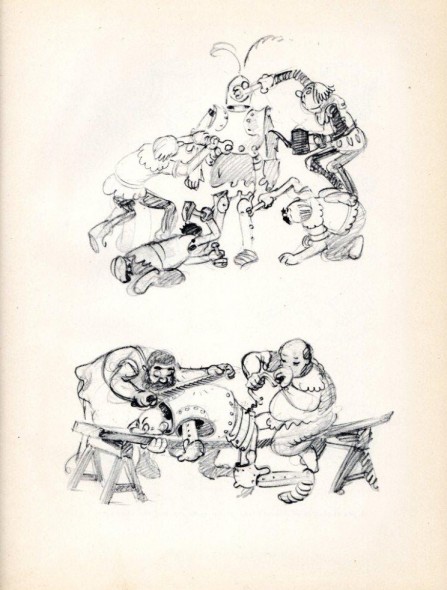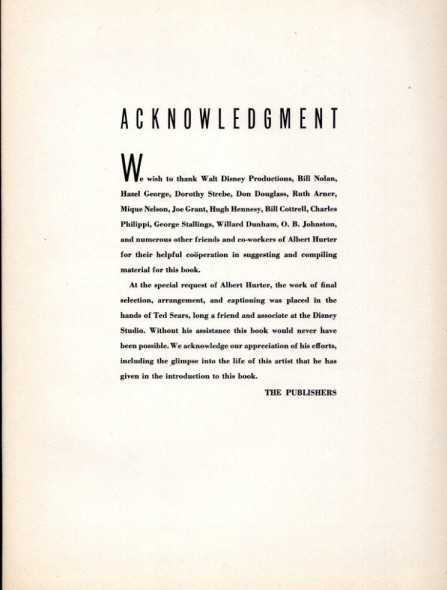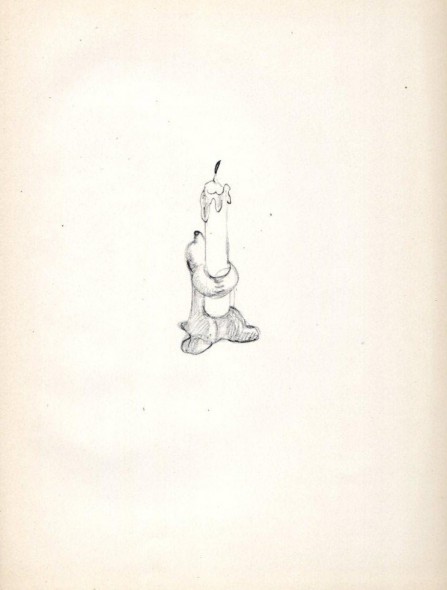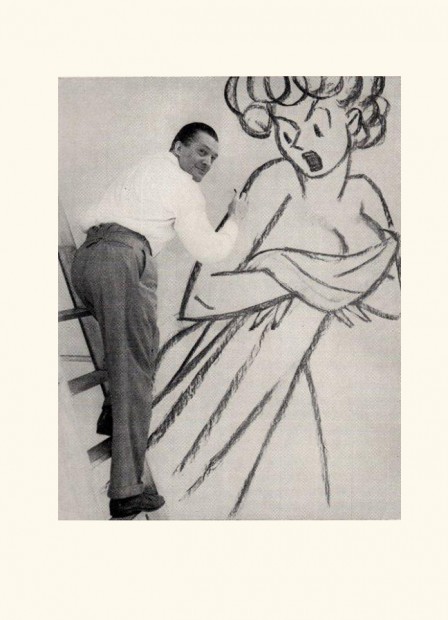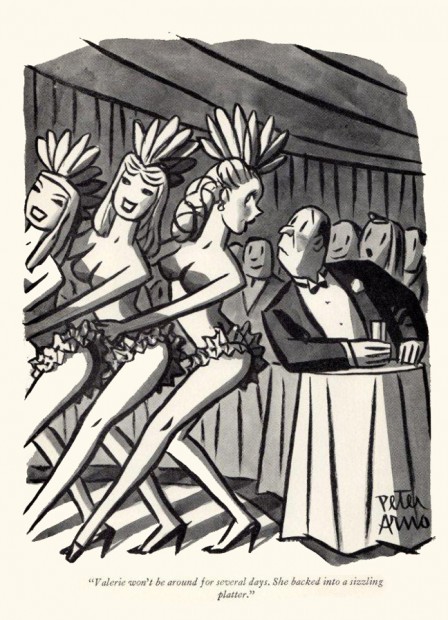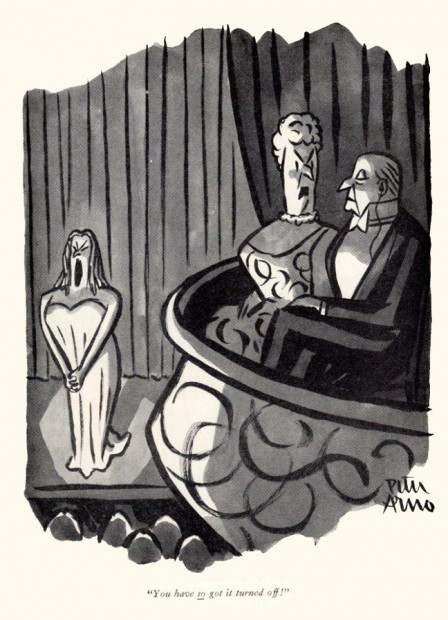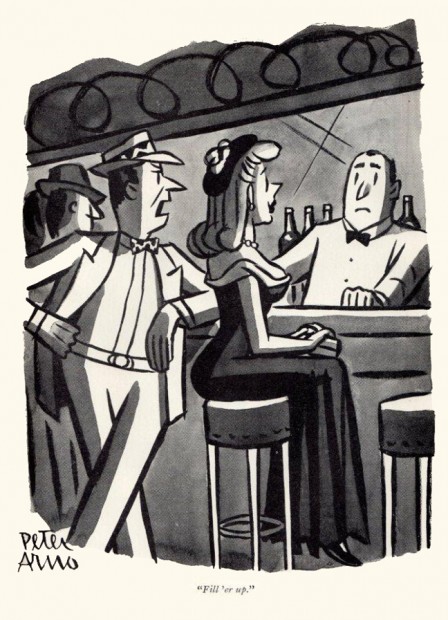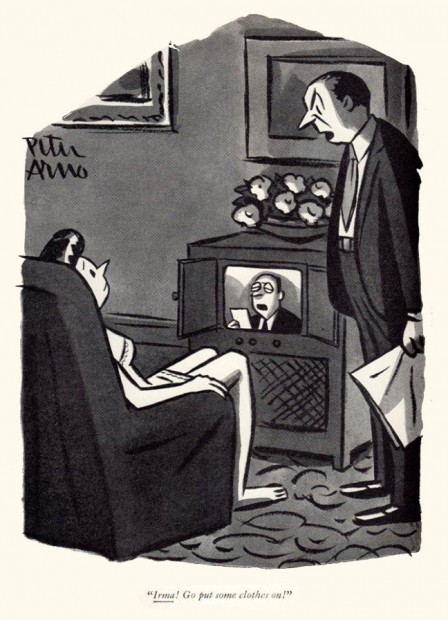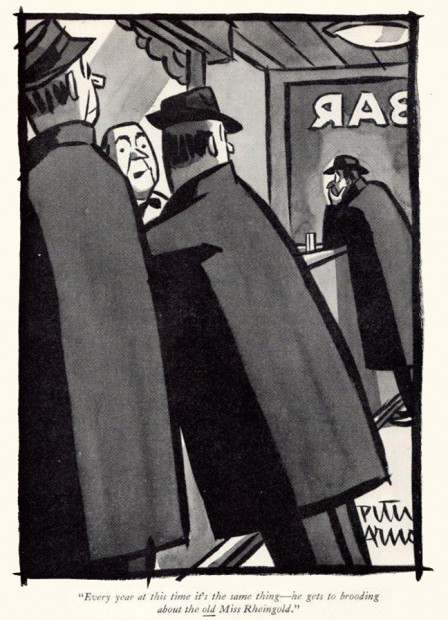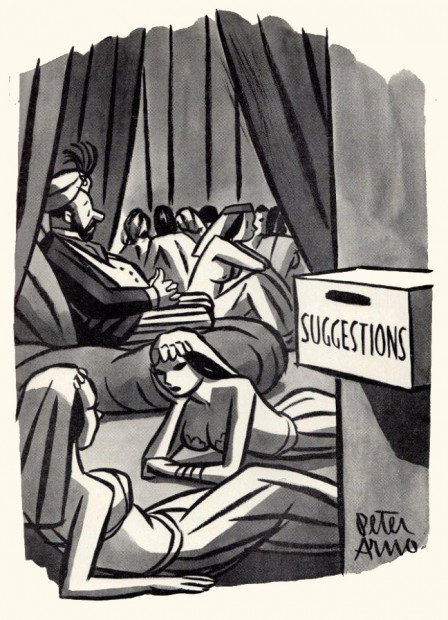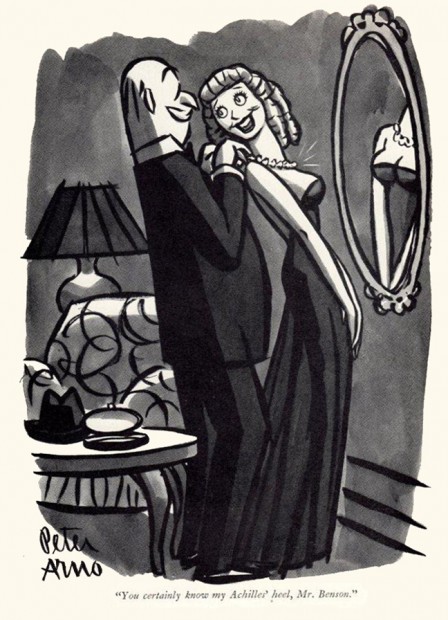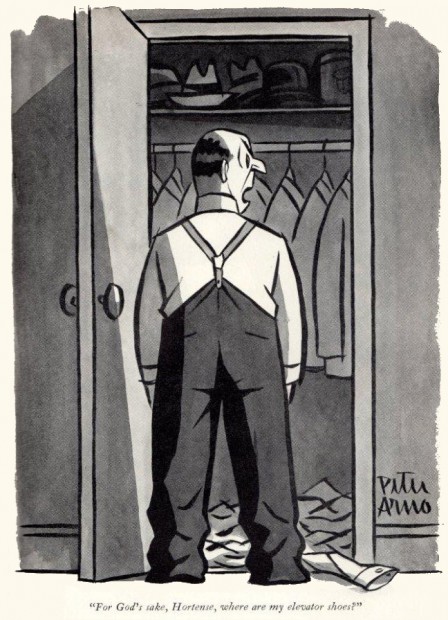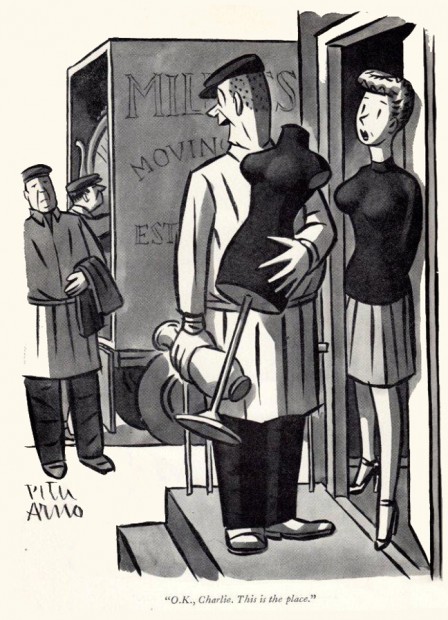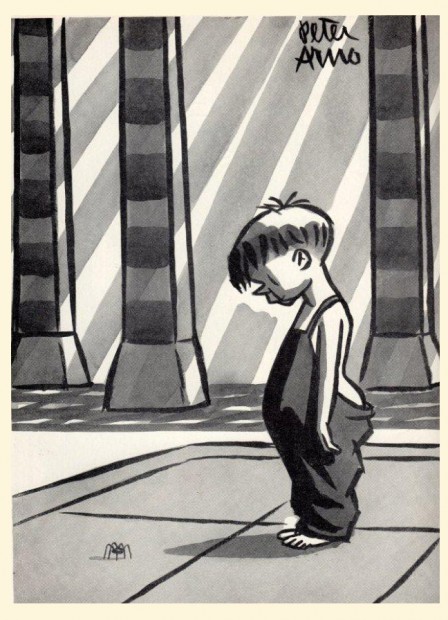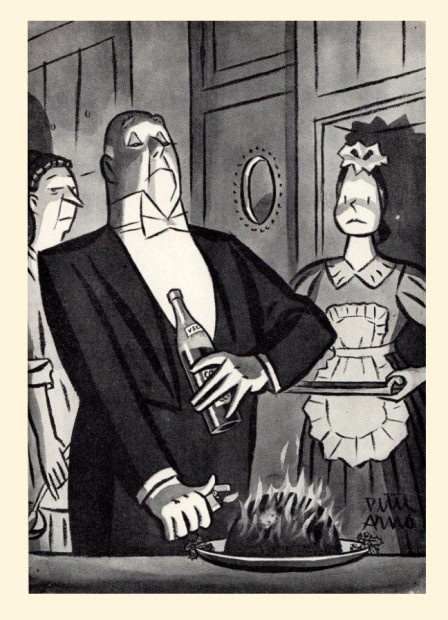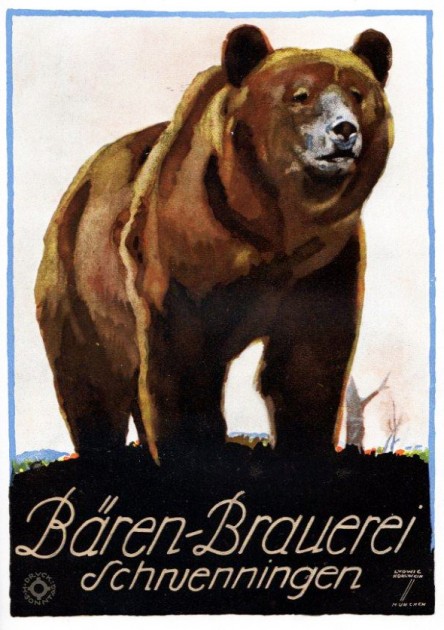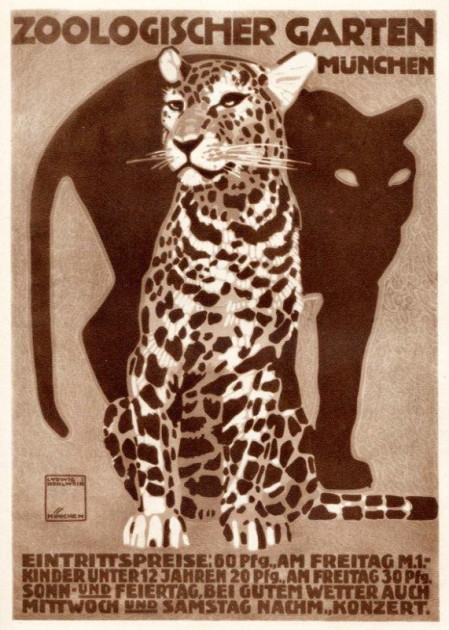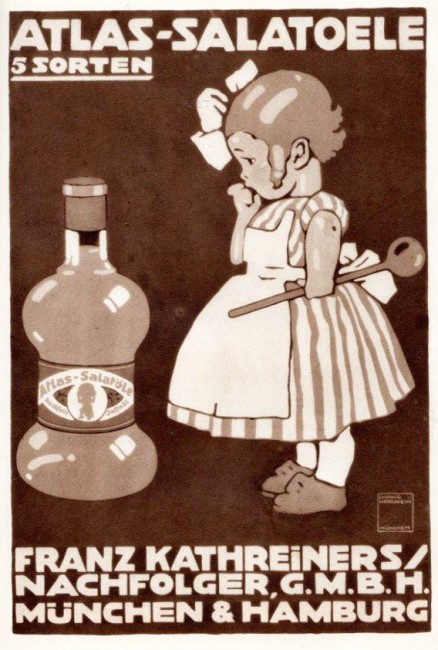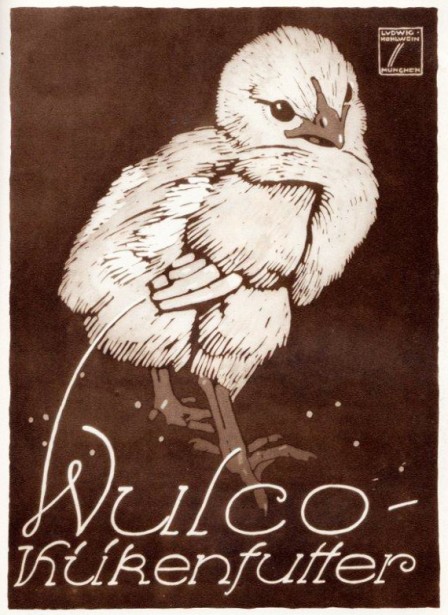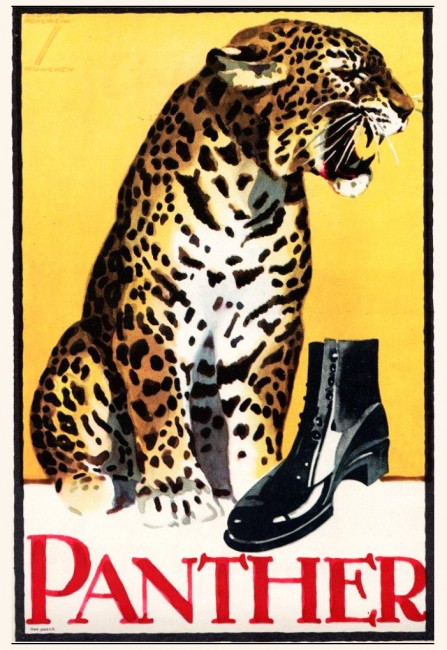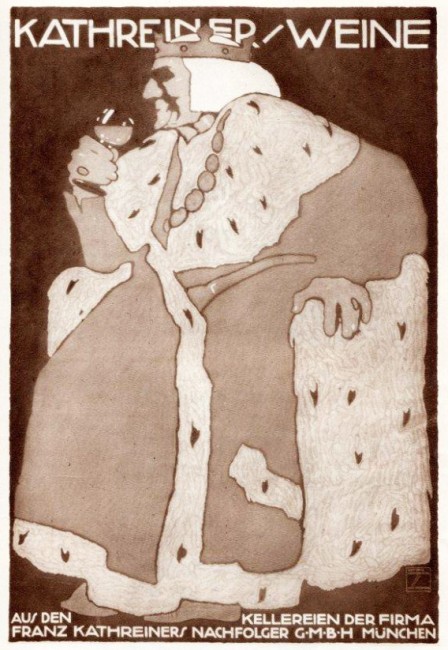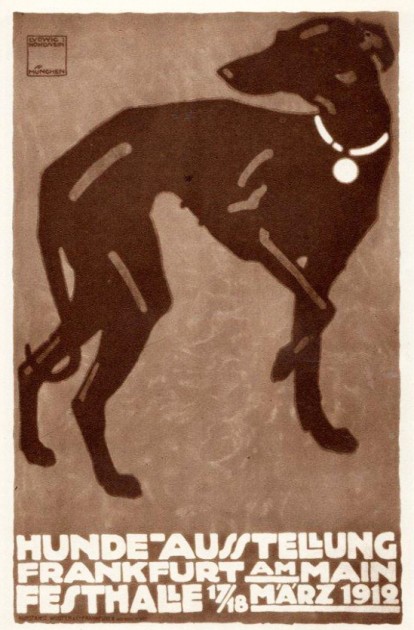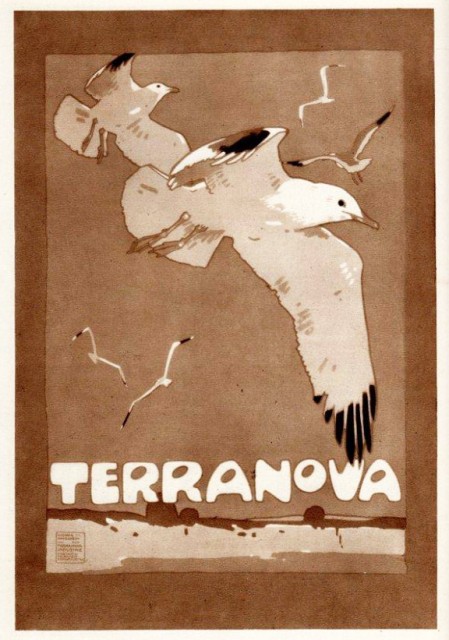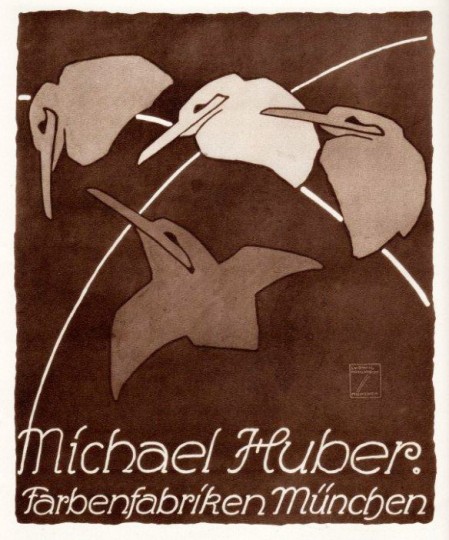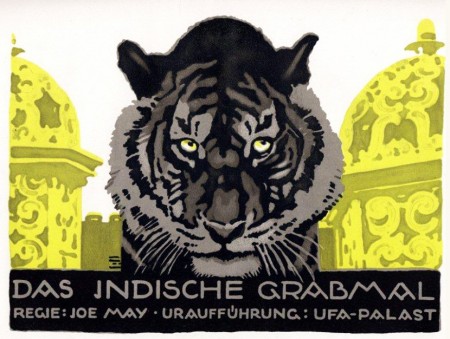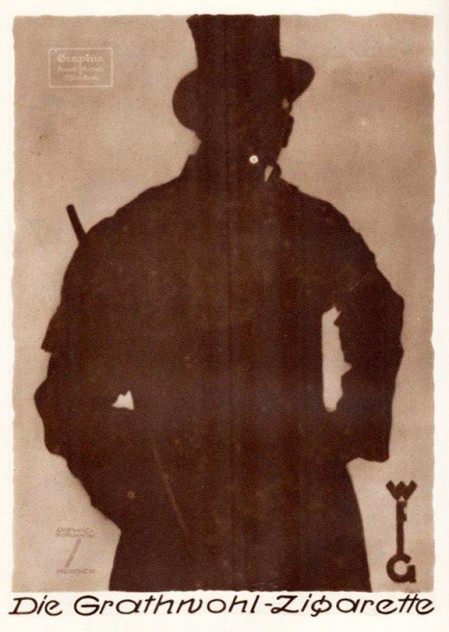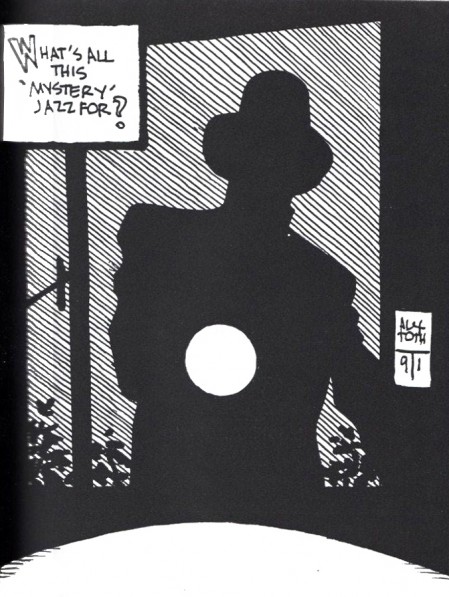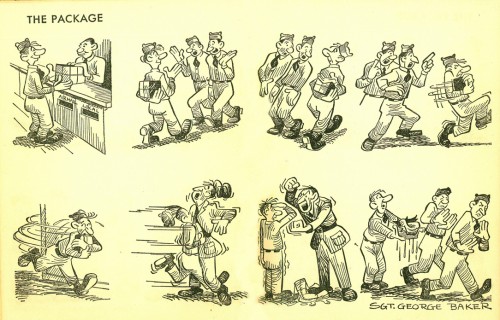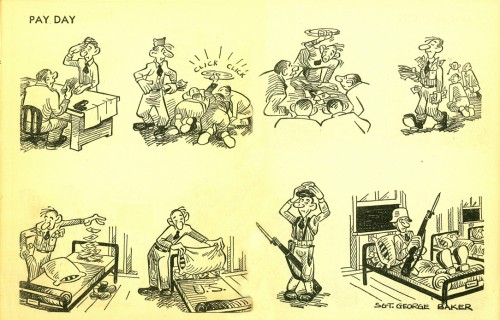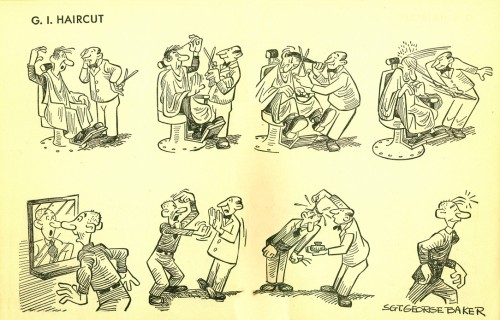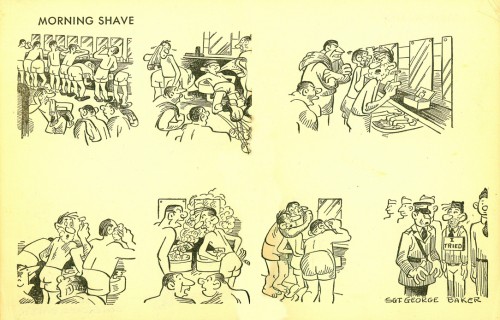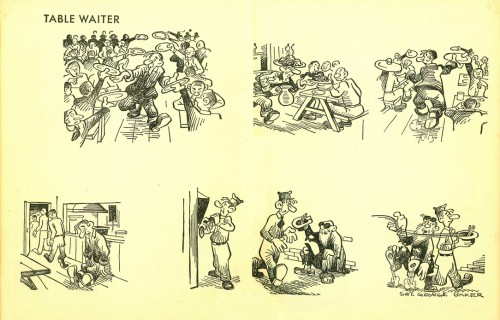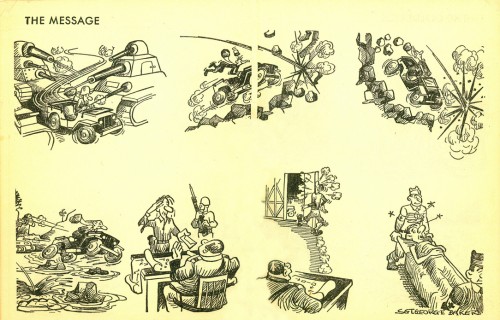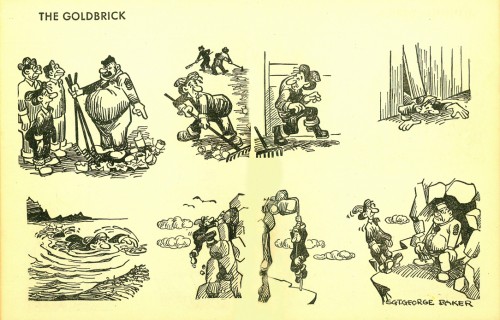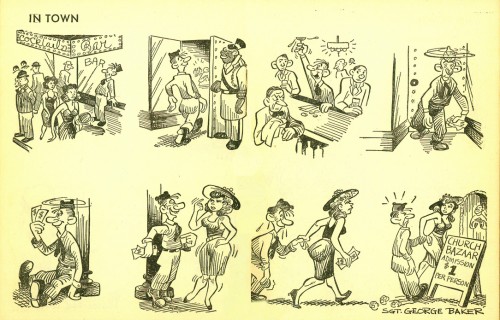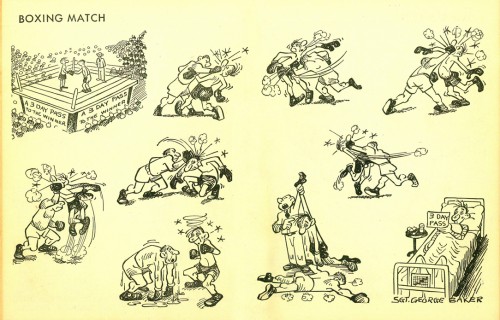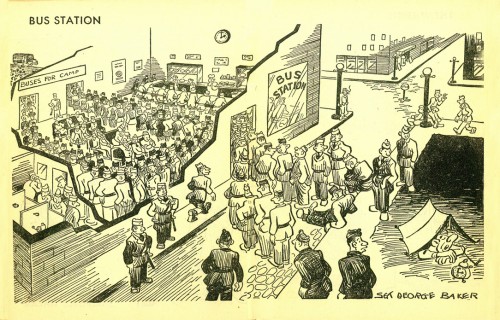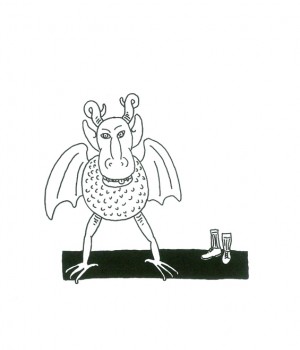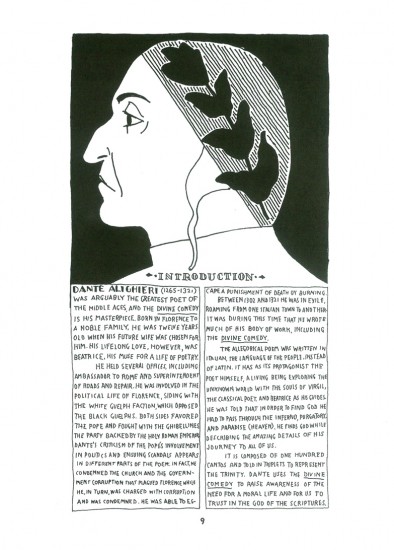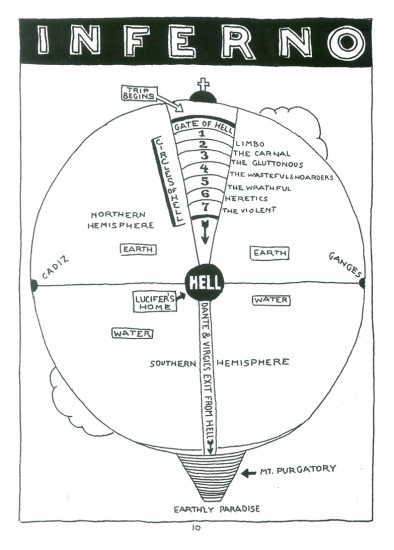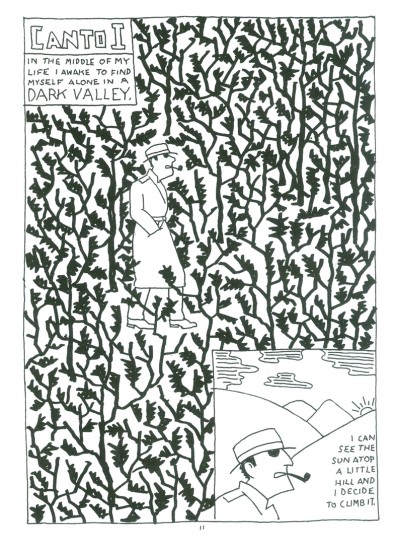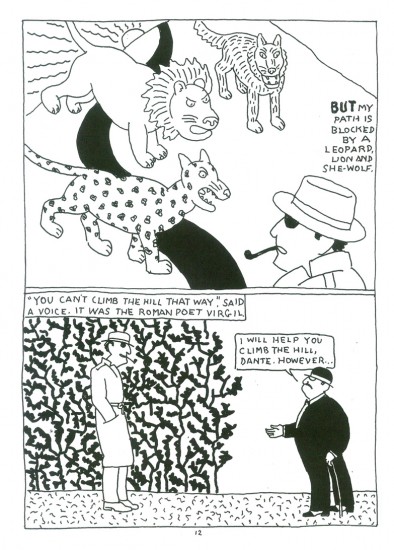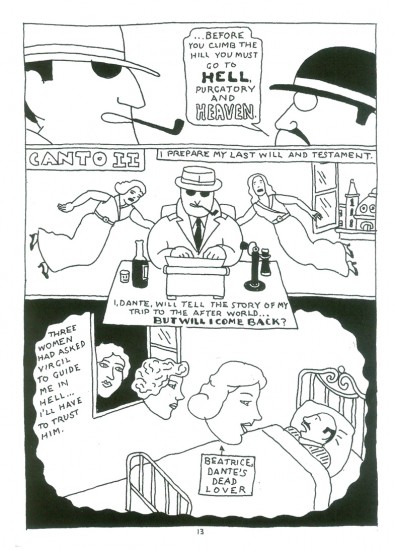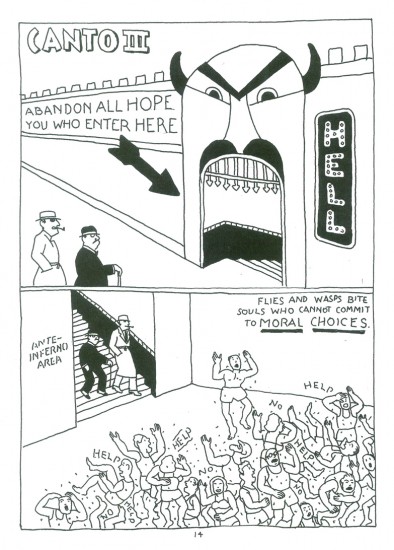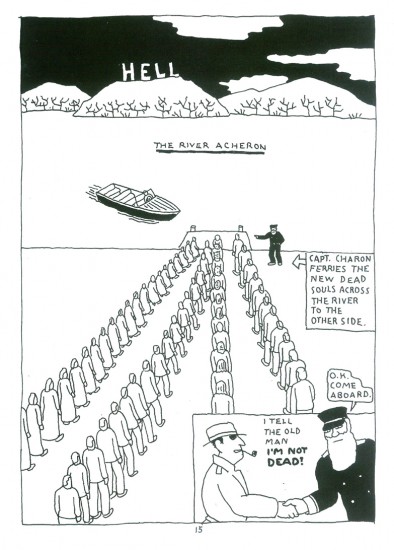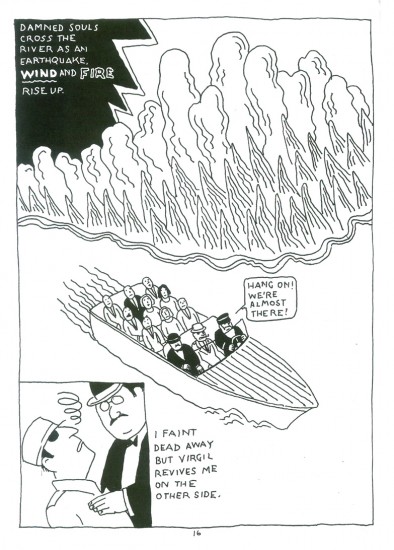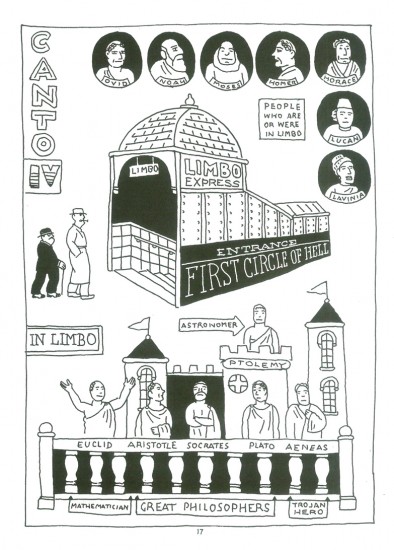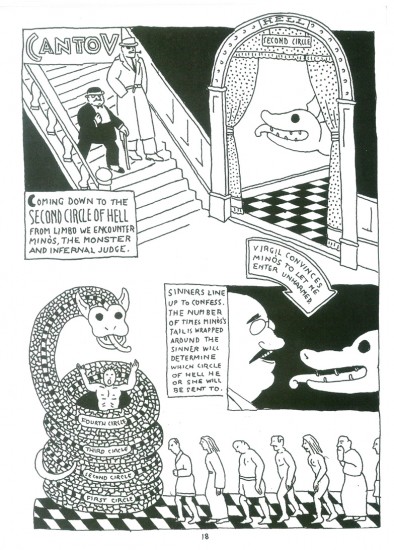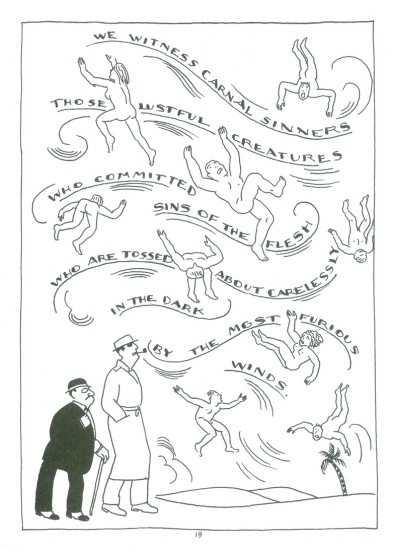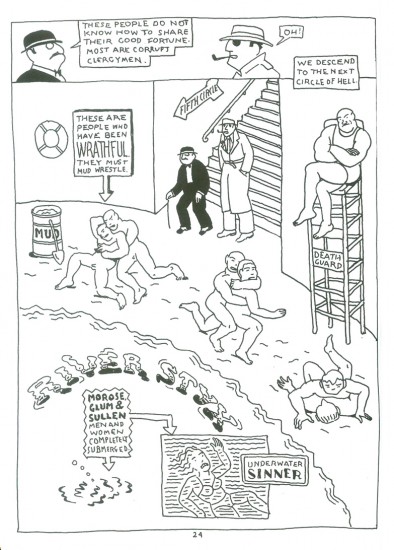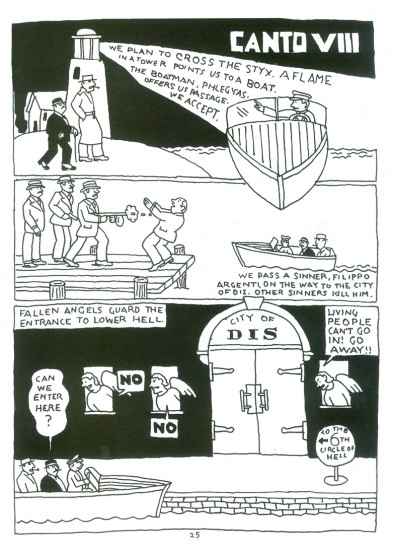Category ArchiveBooks
Art Art &Bill Peckmann &Books 03 Mar 2011 08:10 am
Feininger – 6
- More “Art” from Lyonel Feininger. These illustrations are culled from three separate show catalogs that Bill Peckmann has saved. We’re fortunate he’s sharing them with us. Thank you, Bill.
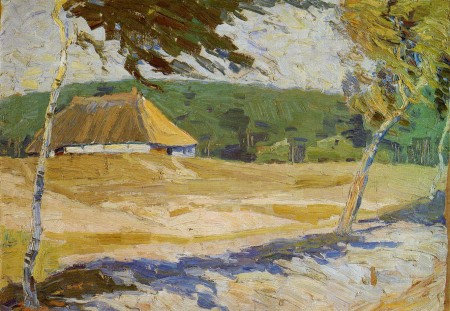 1
11907 – Road, Autumn Wind
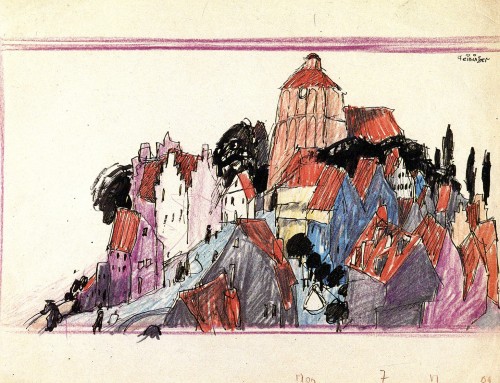 9
9
1909 – Church Above the Town
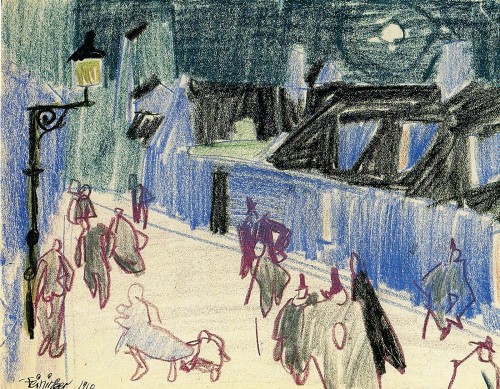 11
11
1910 – Study for Street, Dusk
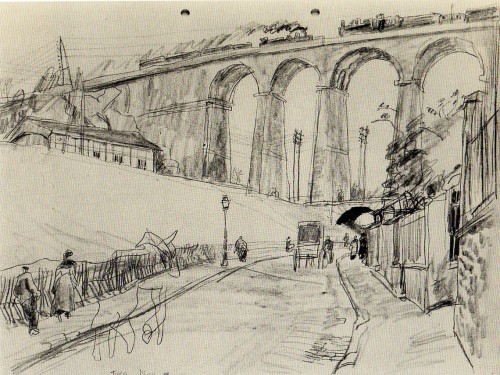 12
12
1911 – Viaduct Near Meudon with Two Trains
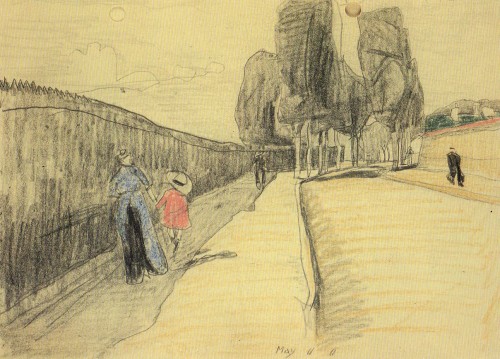 13
13
Suburban Street with Figures
Bill Peckmann &Books &Photos 25 Feb 2011 06:38 am
Train Photos
- Bill Peckman sent me some stills from a book of photos by O. Winston Link, Steam, Steel and Stars. They are magnificent pictures that were taken of steam railroads in America from 1955 to 1960. The photos are stunning achievements, and I had to post the images. You can see why Feininger had his attachment to such imagery. Ah, the romance! Judge for yourself.
Many thanks to Bill Peckmann.
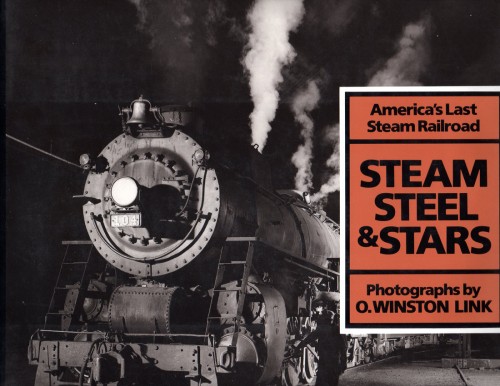
The book’s cover.
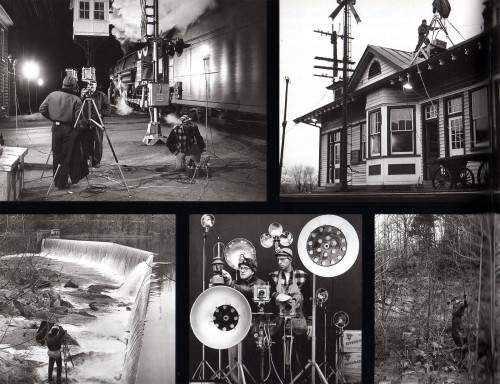 10
10
Here are shots showing the lighting setups done to take the photos.
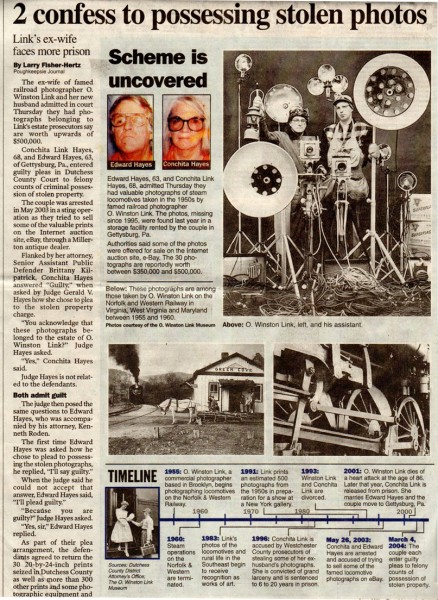 11
11
Here’s a 2004 newspaper article about
some of these photos that had been stolen.
Art Art &Bill Peckmann &Books &Comic Art &Daily post 18 Feb 2011 08:06 am
Feininger – 5 Wee Willie Winkie
Up stairs and down stairs in his night-gown,
Tapping at the window, crying at the lock,
Are the children in their bed, for it’s past ten o’clock?
.
- I don’t suspect that Lyonel Feininger took anything more than the title from this famous, old Scottish poem. Nor do I suspect that the Shirley Temple/John Ford feature, Wee Willie Winkie, owes anything to Feininger.
However, it stands that this is the second comic strip the cartoonist/artist inaugurated in 1906. That was also the last year he worked on a strip, choosing to remain an artist/painter for the remainder of his life. I’ve already posted a piece on Feininger’s first strip, The Kin-Der-Kids, in the past month. I’ve also posted three pieces on Feininger’s artwork (1, 2, 3).
These have all been loaned to me courtesy of Bill Peckmann‘s gracious kindness and his amazing archive of artwork. Many thanks to him.
Here are strips of Wee Willie Winkie’s World straight from this book edited and introduced by Bill Blackbeard.
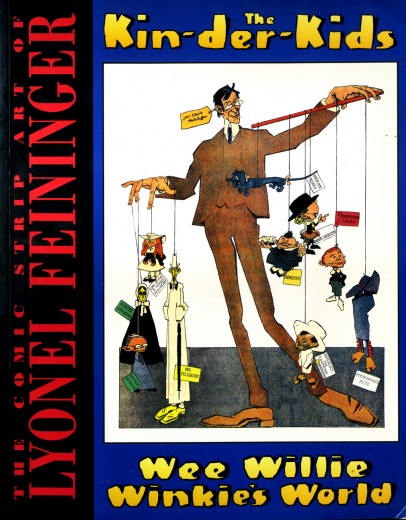
The original book cover.
 7
7
We’ve already seen Feininger’s love of trains in some of his watercolors.
Animation &Animation Artifacts &Bill Peckmann &Books &Disney &Illustration 04 Feb 2011 08:44 am
He Drew As He Pleased – 6
- The Albert Hurter book, He Drew As He Pleased, continues. This book is a beautiful edition, which reminds me – in a tactile way – of The Robert Field book The Art of Walt DIsney – of drawings Hurter did while at the Disney Studio in the 30s and early 40s.
Hurter was a key designer from Europe who was allowed to draw what he wanted as inspiration for the designs of the films in production at the time. He was an enormous influence on Snow White and Pinocchio.
These pages are all scanned and sent to me by Bill Peckmann and I have to thank him. The book is not easy to scan. So here we complete the posted book.
.
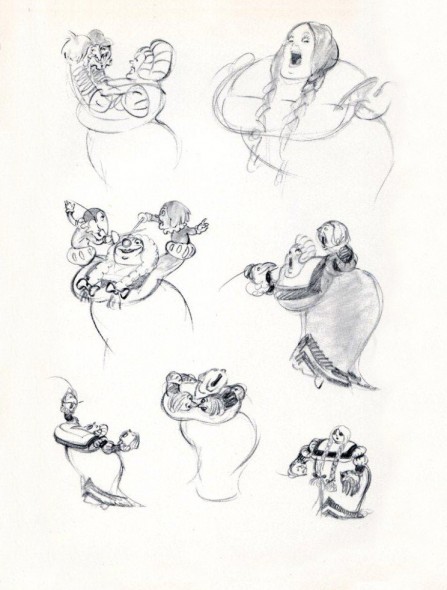 82
82“Opera”
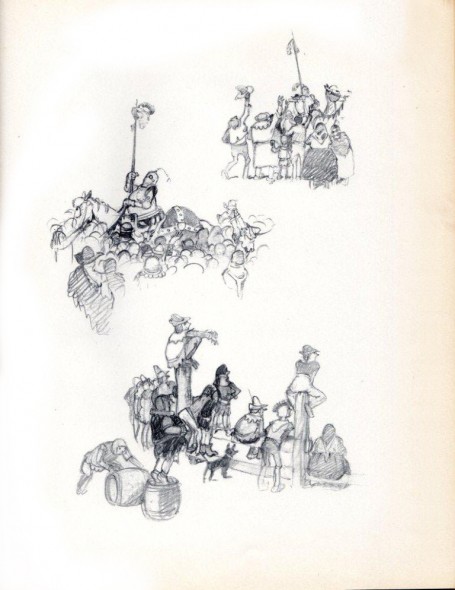 84
84
‘When “The Reluctant Dragon” was in preparation,
these medieval studies appeared… each from memory.
Albert never resorted to “scrap”…’
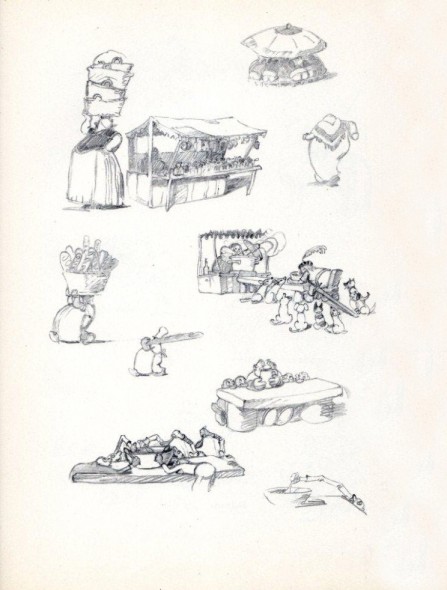 88
88
“Refreshments… Fifteenth Century”
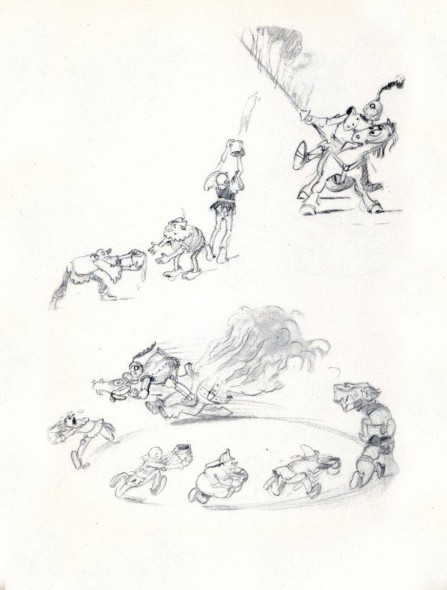 89
89
“Knighthood’s dignity never seemed to impress Albert”
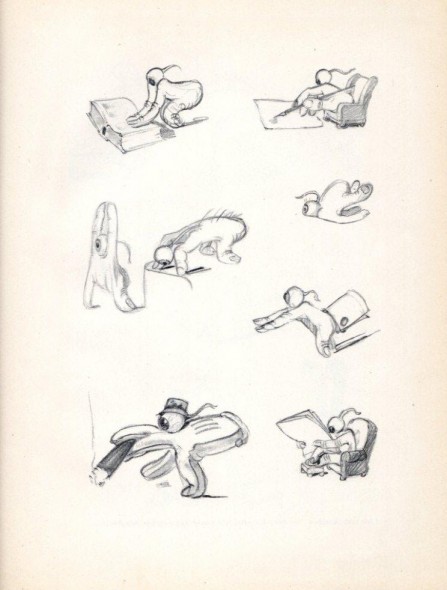 94
94
“A pet character of Albert’s who never quite never reached the screen”
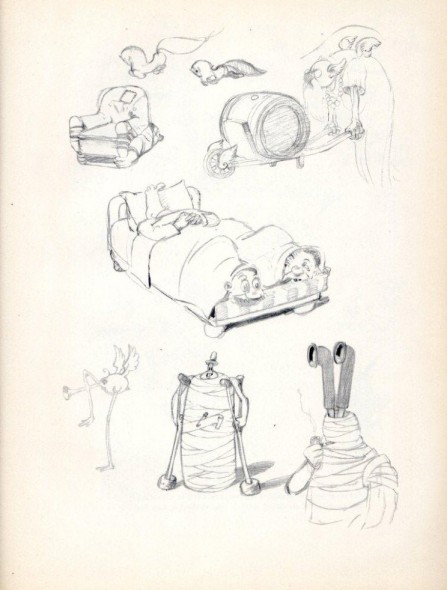 95
95
“Some of his last sketches.”
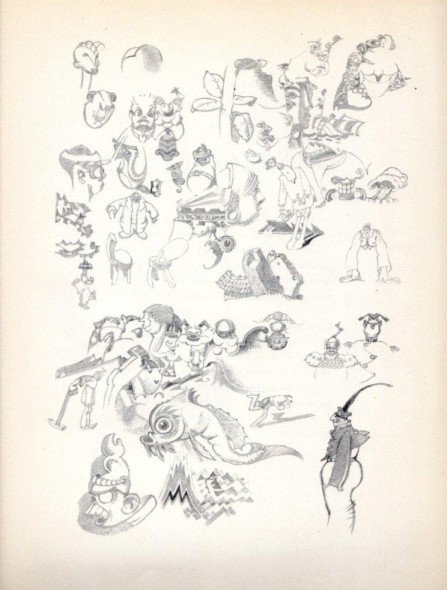 96
96
“Between serious thoughts Albert succeeded in elevating
the practice of doodling until it approached a fine art”
Bill Peckmann &Books &Comic Art &Illustration 22 Jan 2011 08:40 am
Peter Arno
- Peter Arno had set out to be a musician in his earliest years, but the sale of a gag cartoon to the New Yorker (which ran June 20, 1925) started him on a long, industrious and extraordinary career. He appeared in the New Yorker almost every week of my life, so I got used to seeing his work. I also took for granted the absolute ease with which he sold his gags, something that’s sorely missed today. The compositions, the use of grey tones (most of his cartoons were done in B&W&grey washes with black ink brush lines), and the use of angles all played perfectly to the service of the gag.
Bill Peckmann surprised me with these images from the book on Arno. Thanks, Bill.
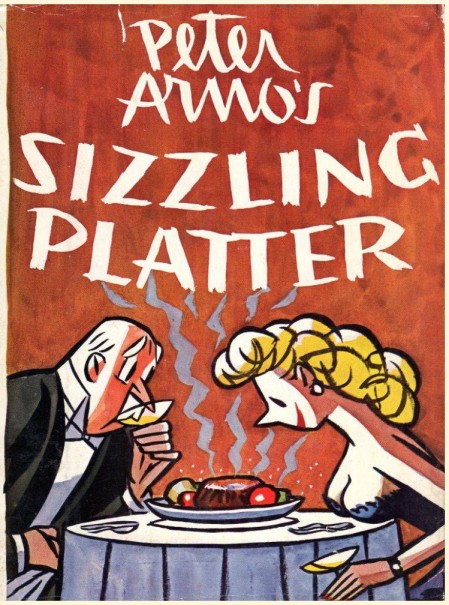
The book’s cover.
Art Art &Bill Peckmann &Books &Comic Art &Illustration 21 Jan 2011 08:32 am
Ludwig Hohlwein
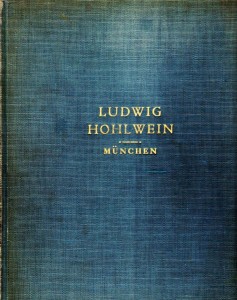 - We’ve been, lately, showcasing some of Lyonel Feirlinger‘s work. A close cousin of his would seem to be Ludwig Hohlwein. Hohlwein was a brilliant German poster artist. His influence seems to have fallen far and wide. Alex Toth and Rowland B. Wilson have both admitted a fondness for Hohlwein, and homage can be found in several of their works. There can also be no doubt that Vernon Grant was aware of Hohlwein’s work.
- We’ve been, lately, showcasing some of Lyonel Feirlinger‘s work. A close cousin of his would seem to be Ludwig Hohlwein. Hohlwein was a brilliant German poster artist. His influence seems to have fallen far and wide. Alex Toth and Rowland B. Wilson have both admitted a fondness for Hohlwein, and homage can be found in several of their works. There can also be no doubt that Vernon Grant was aware of Hohlwein’s work.
Hohlwein was born in 1874 and practiced his art until 1906 when he turned to pster design. He quickly became one of the leading masters of his day. (Interestingly, it was 1906 when Feininger did his two great comic strips and left to turn to oil painting in Germany.)
Bill Peckmann introduced me to Hohlwein, and he’s scanned many of the posters from the book to the right, a 1926 publication. Many thanks, again, to Bill for the material.
Here, then, are some of the posters from this book:
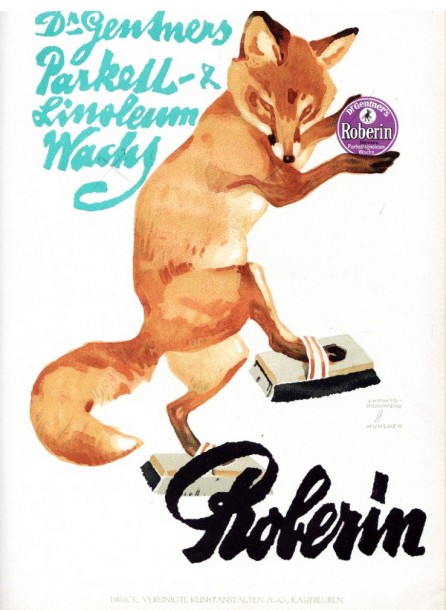 1
1
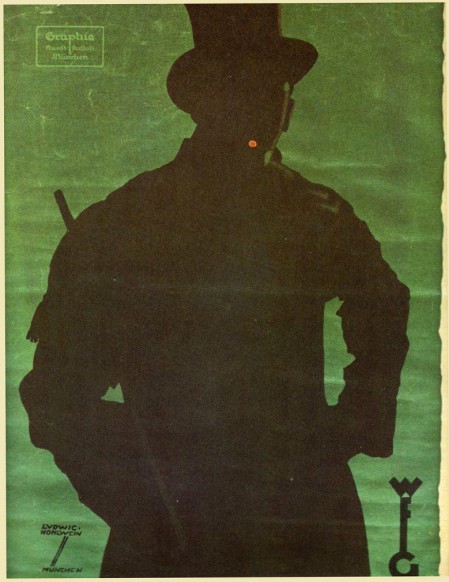 13
13
Here’s a note from Bill Peckmann: “Here’s the color version of the ad/poster
from an oversized Dover reprint book. Sorry I couldn’t get it all on the scanner,
but you’ll get the jest of it. It’s that glowing coal of the cigarette in the
silhouette that Rowland just loved. Pretty neat, huh?”
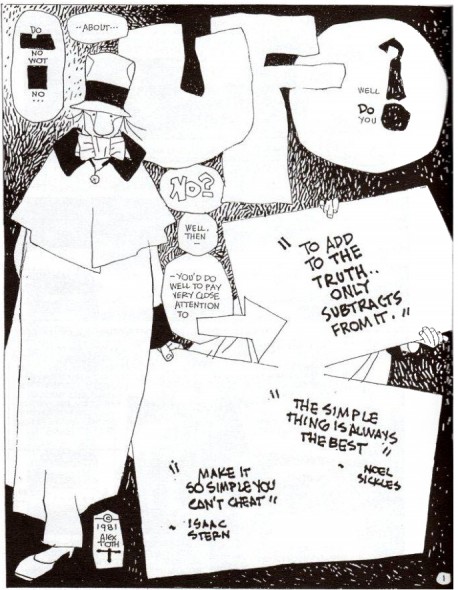 15
15
Another Alex Toth image that looks
very much like a Feininger strip panel.
Animation &Books &Hubley &Illustration 16 Jan 2011 08:52 am
Recap – Art Director Awards ’57
Here’s a recap of one of my favorite pieces. For some reason, I get turned on by every one of these stills. Perhaps because they were printed in the Halas book which was seminal to my education about animation when I was a child – I think I had the book on permanent loan from my local library. Whatever the reason, I love looking at these pictures.
.
- I enjoy thumbing through the Art Director’s Annuals. There’s a lot of amazing illustration to view with plenty of ideas and sharp graphics on display. I have, as a good example of these hard-covered catalogues, the 1957 issue. 90% of the book is composed of illustration in the different advertising fields. A small section is devoted to TV spots and illustration. Naturally, I have a strong interest in this section.
Editorial Art, Advertising Art and Television Art all get their chapters.
Here is a pictoral list of the winners in animation for the TV commercials awards in 1957. A number of these spots have remained familiar (at least as images in old animation books – like Halas’ Technique of Film Animation.)
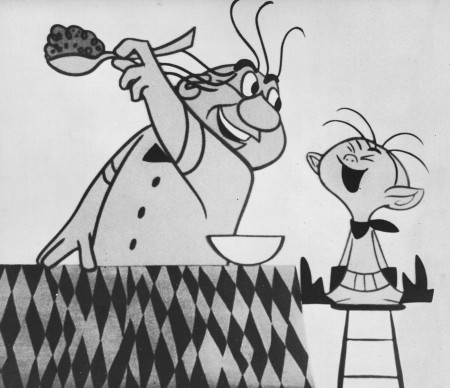
The biggest prize went to John Hubley’s Maypo commercial.
Storyboard Inc. – producer
John Hubley – Director & Art Director
Emery Hawkins – animator
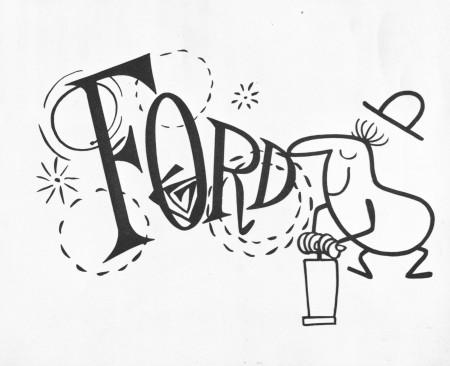
Ford commercial
Playhouse Pictures – producer
Bill Melendez – director
Sterling Sturtevant – Art Director
Bill Littlejohn – animator
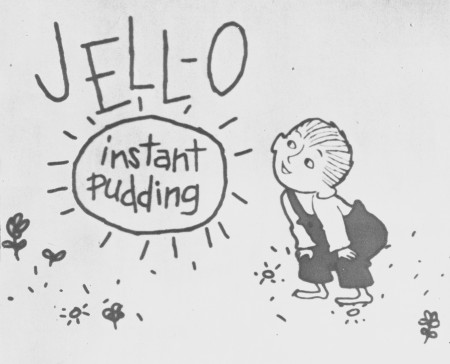
Jello
Ray Patin Productions – producer
Sonia Linker – Art Director
Maurice Sendak – artist
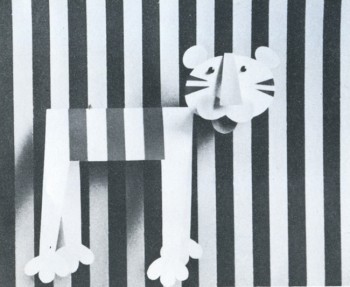
Maxwell House
Audio Productions Inc. – producer
Jerome Kuhl – artist
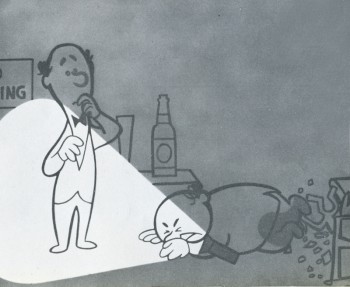
Piels Brothers Beer
UPA – producer
Jack Sidebotham – art director
Chris Ishii – designer
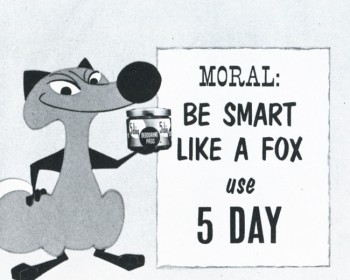
5 Day Deoderant
Storyboard Inc – producer
John Hubley – art director
Art Babbitt – animator
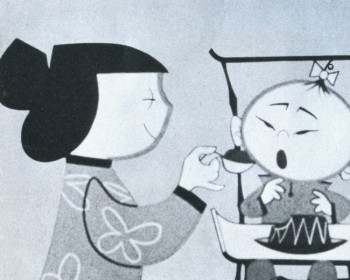
Jello Baby
Ray Patin Productions – producer
Ruchard Vab Benthem – artist
Ken Champin – photographer
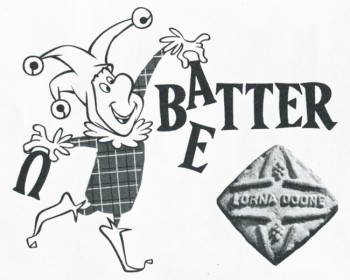
Lorna Doone
Bill Sturm Studio
Frank Broadhurst – art director
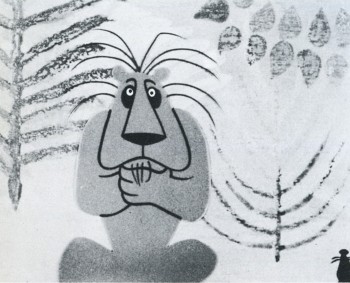
The Lion and the Mouse – Prudential
Storyboard Inc. – producer
John Hubley – director
Art Babbitt & Emery Hawkins – animation
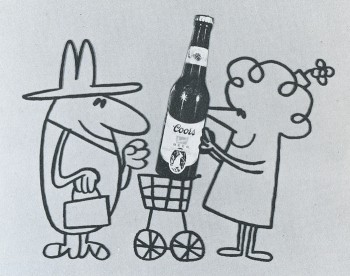
Coors Beer
UPA – producer
Jules Engel – director
Fred Crippen – art director
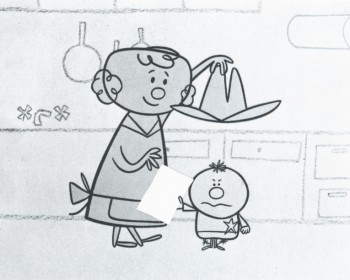
Scott Paper Co.
UPA – producer
Jack Goodford – art director
Grim Natwick, Sam Wiggenhorn – animators
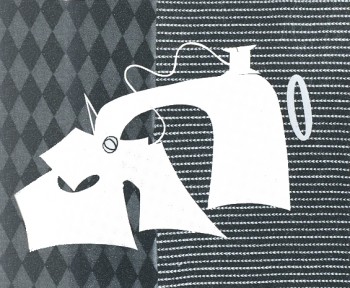
Donahue Sales Corp.
UPA – producer
Jack Goodford, Chris Ishii – art directors
Cliff Roberts – animator
Books &Comic Art &Illustration 31 Dec 2010 08:19 am
Sad Sack 2
- A couple of weeks back I started posting some cartoons by George Baker from his collection of Sad Sack strips done while in the Army. This small book was introduced to me by Bill Peckmann. I immediately ran out and bought an old used copy, and now continue posting some of those strips.
I was a fan of the strip when it was a comic book in the early 60s. Looking back on the earlier artwork, as can be seen here, the original strip has a stronger look. The thick-thin outline makes it feel, in some places, like German Expressionist art, as we might’ve seen under Otto Dix’s pen. (This is particularly true in some panels on #6, 7 and 10.)
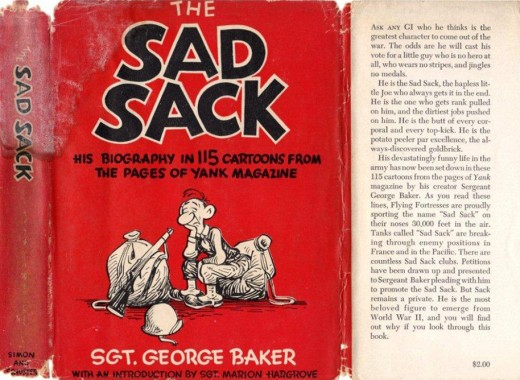
The front cover of the book in all its worn glory.
Books &Comic Art 16 Dec 2010 08:19 am
Dean Mullaney’s Complete Polly
Polly and Her Pals: the Complete Sunday Comics 1925-1927 has finally arrived. Dean Mullaney has written what may be the finest book on Polly and Her Pals, gathering many many examples of the Sunday strips and adding some excellent essays at the head of the book. It’s a gem and should adorn any collector’s shelf.
Dean sent me a copy of the uncorrected proofs a while ago, and I’ve been so embedded in the strips that I haven’t written a word about it, as yet. I hope to correct that delay.
Until now, we’ve had the fine books edited by Rick Marschall: The Complete Color Polly & Her Pals 1926-1927 and 1927-1929. Both provide beautiful reproductions of the Sunday strips for those years, but offer only short essays as introduction. This new book edited by Dean Mullaney provides an extended and extensive essay with a lot of solid information about Sterrett and the strip by Jeet Heer. It’s an important document, in its own right, but then the wealth of material in the book beyond that is enormous. What a job! A delight for any lover of the strip.
The essays include:
AN ARTIST’S ARTIST by P. Craig Russell and
THE MOST MUSICAL OF CARTOONISTS, CLIFF STERRETT by Jeet Heer.
There are plenty of ads, trivia and the earliest examples of the strip, giving us a full picture of the birth of Sterrett’s comic and the popularity in its day.
This book is magnificent and deserves all of your attention if you love comic art and especially if you have any fondness for Cliff Sterret’s Polly and Her Pals.
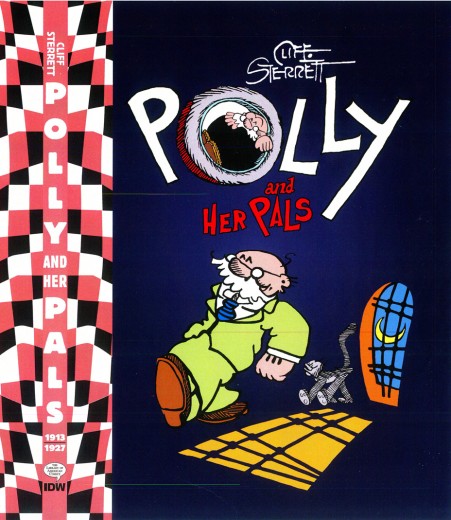
(Click any image to enlarge.)
.
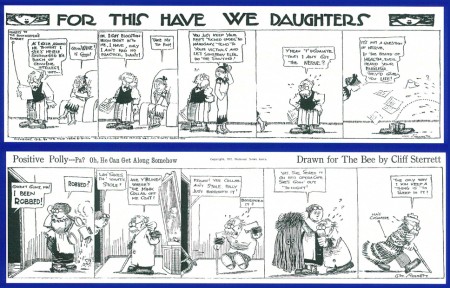
The original strip.
.
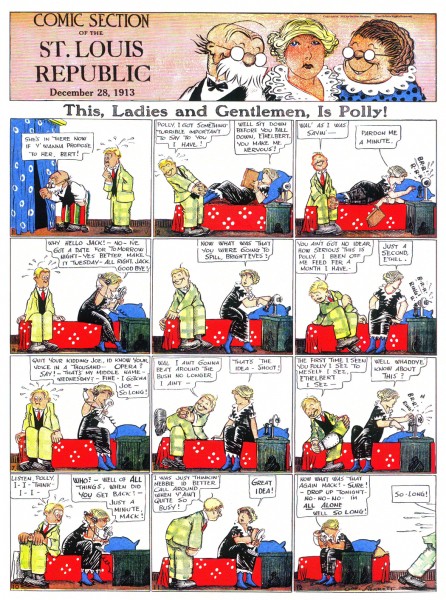
Polly appears.
.
I’m always blown away by the incredible graphics in the strips. I didn’t want to give away too many (though there are plenty in this book) so I’ve pulled some panels from a few other strips to give you an idea of what I mean.
.
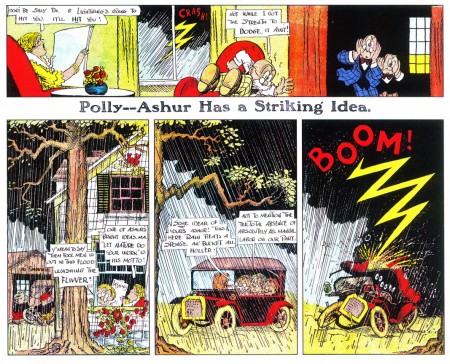
June 8, 1917
.
Even early on there’s a lot of black with the tree silhouetted.
The rain takes over right from the start even with all the black.
.
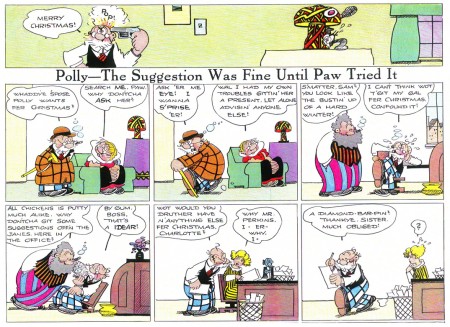
December 14, 1924
.
This strip seems to use a lot of white space. This is just
the opposite of most of the Polly strips. Black and black
silhouettes usually take over . . .
.
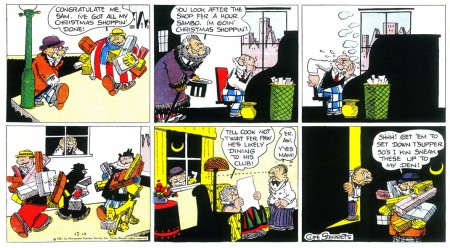
December 13, 1925
.
. . . like this strip where the silhouette of the desk takes stage center.
.
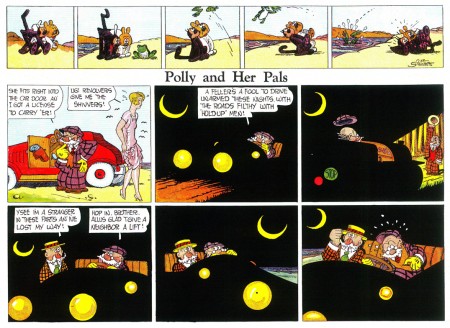
June 20, 1926
.
Here’s a strip that uses black for the night sky
as well as the car being driven. Very effective.
.
Take a look at this book. It’d make a great Christmas present for yourself.
Books &Illustration 10 Dec 2010 08:20 am
Chwast’s Dante
- Seymour Chwast has been one of our most important designers for generations, now. He has influenced art as one of the founding members of Pushpin Studios and has touched all phases of illustration and design.
This year he produced a graphic novel version of Dante’s Divine Comedy: A Graphic Adaptation. The book doesn’t simplify but has reduced the Epic poem to a detective story. The pages are black and white, but the color is all in the drawing. The only similar work I can think of is Robert Crumb’s The Book of Genesis, an equally brilliant work.
Here’s a sample of Book I – Inferno. In other posts, I’ll share a bit of the remaining two parts – Purgatory and Paradise.
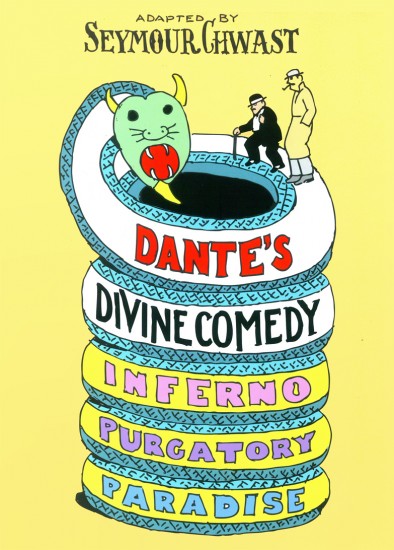 cover
cover
